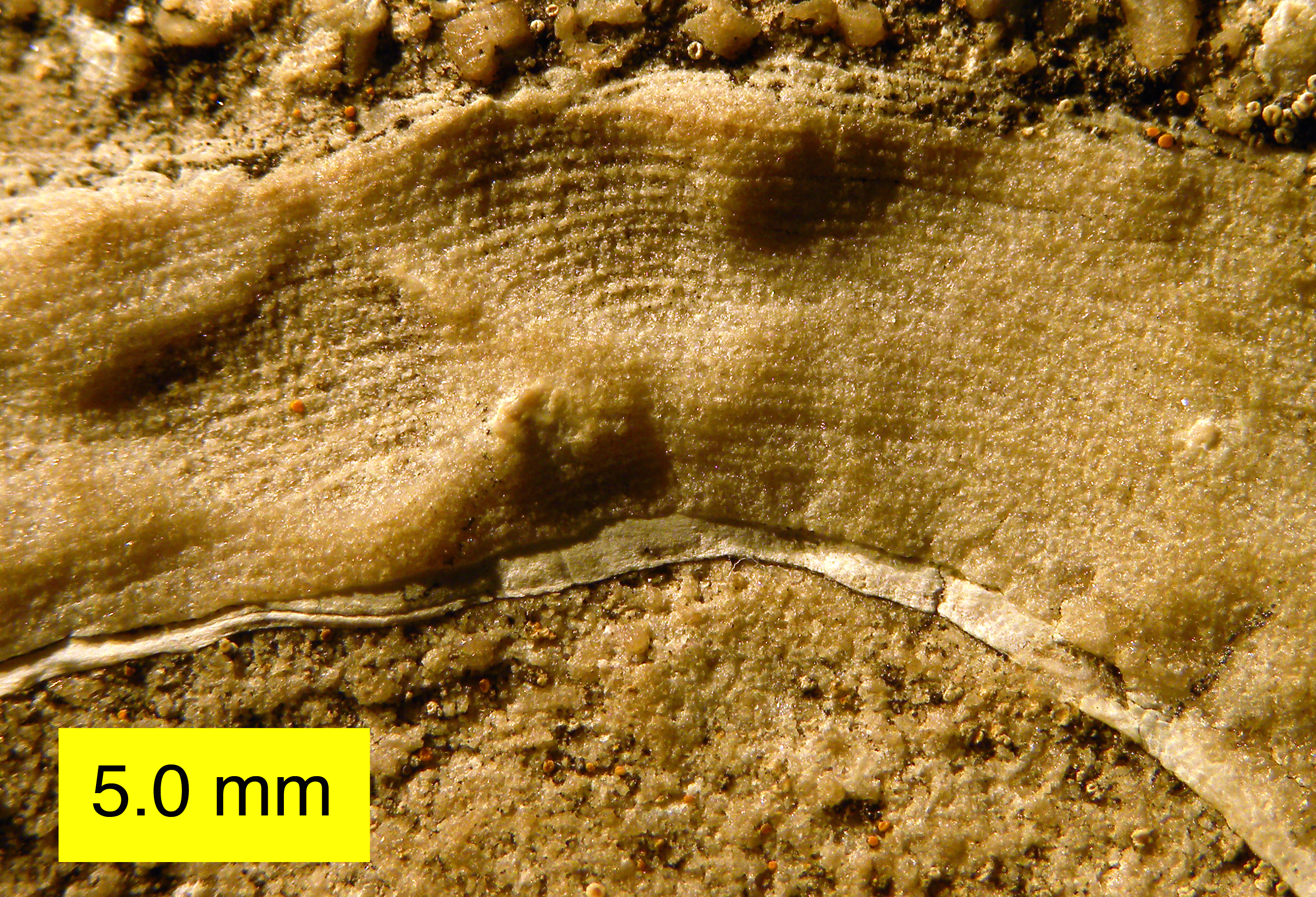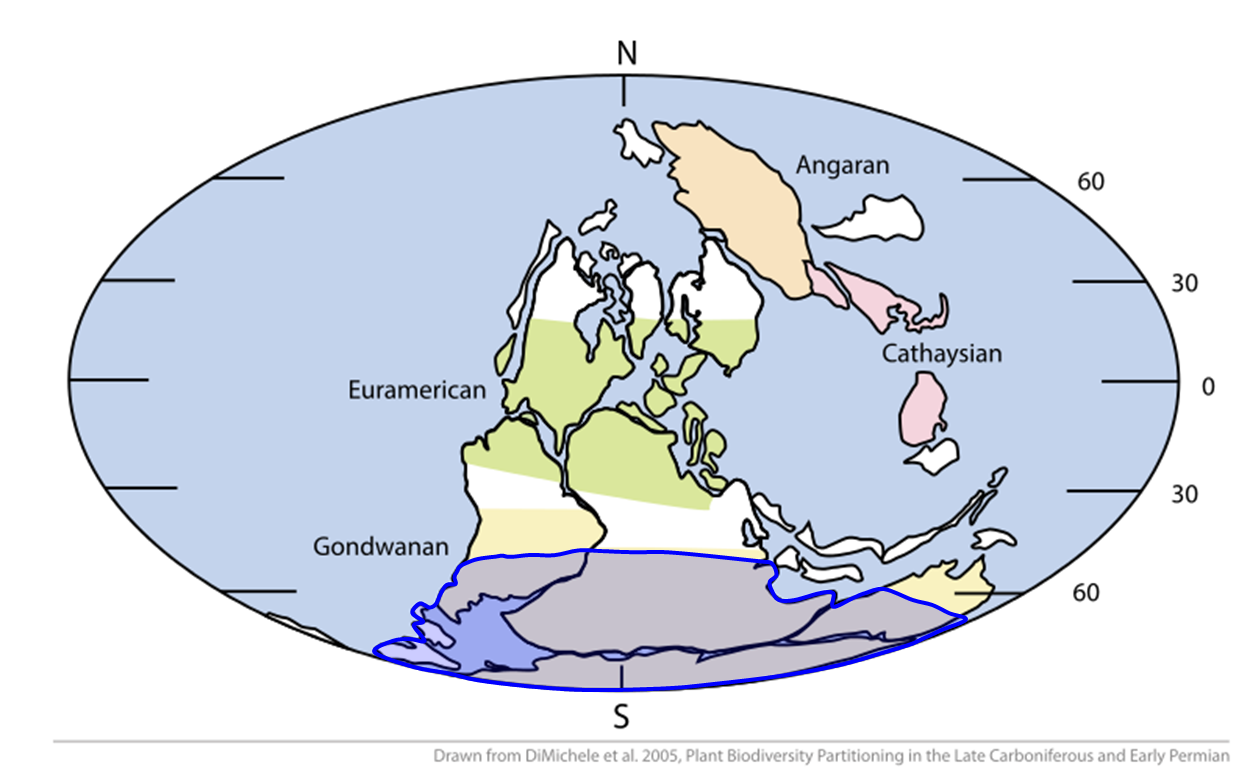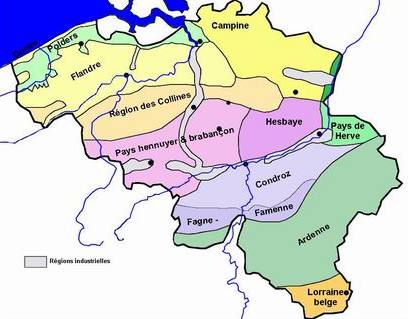|
Famennian
The Famennian is the latter of two faunal stages in the Late Devonian Epoch. The most recent estimate for its duration estimates that it lasted from around 371.1 million years ago to 359.3 million years ago. An earlier 2012 estimate, still used by the International Commission on Stratigraphy, estimated that it lasted from million years ago to million years ago. It was preceded by the Frasnian stage and followed by the Tournaisian stage. Major events In the seas, a novel major group of ammonoid cephalopods called clymeniids appeared, underwent tremendous diversification and spread worldwide, then just as suddenly went extinct. The beginning of the Famennian is marked by the final stages of a major extinction event, the Kellwasser Event, which is the largest component of the Late Devonian Mass extinction. The end of the Famennian experiences a smaller but still quite severe extinction event, the Hangenberg Event. A brief episode of glaciation, possibly linked to the Hangenber ... [...More Info...] [...Related Items...] OR: [Wikipedia] [Google] [Baidu] |
Hangenberg Event
The Hangenberg event, also known as the Hangenberg crisis or end-Devonian extinction, is a mass extinction that occurred at the end of the Famennian stage, the last stage in the Devonian Period (roughly 358.9 ± 0.4 million years ago). It is usually considered the second-largest extinction in the Devonian Period, having occurred approximately 13 million years after the Late Devonian mass extinction (Kellwasser event) at the Frasnian-Famennian boundary. The Hangenberg event was an anoxic event marked by a layer of black shale, and it has been proposed to have been related to a rapid sea-level fall from the last phase of the Devonian Southern Hemisphere glaciation. It has also been suggested to have been linked to an increase in terrestrial plant cover. That would have led to increased nutrient supply in rivers and may have led to eutrophication of semi-restricted epicontinental seas and could have stimulated algal blooms. However, support for a rapid increase in plant cover at the e ... [...More Info...] [...Related Items...] OR: [Wikipedia] [Google] [Baidu] |
Late Devonian Extinction
The Late Devonian extinction consisted of several extinction events in the Late Devonian Epoch, which collectively represent one of the five largest mass extinction events in the history of life on Earth. The term primarily refers to a major extinction, the Kellwasser event (also known as the Frasnian-Famennian extinction), which occurred around 372 million years ago, at the boundary between the Frasnian stage and the Famennian stage, the last stage in the Devonian Period.Racki, 2005McGhee, George R. Jr, 1996. The Late Devonian Mass Extinction: the Frasnian/Famennian Crisis (Columbia University Press) Overall, 19% of all families and 50% of all genera became extinct. A second mass extinction, the Hangenberg event (also known as the end-Devonian extinction), occurred 359 million years ago, bringing an end to the Famennian and Devonian, as the world transitioned into the Carboniferous Period. Although it is well established that there was a massive loss of biodiversity in the Late ... [...More Info...] [...Related Items...] OR: [Wikipedia] [Google] [Baidu] |
Famennian
The Famennian is the latter of two faunal stages in the Late Devonian Epoch. The most recent estimate for its duration estimates that it lasted from around 371.1 million years ago to 359.3 million years ago. An earlier 2012 estimate, still used by the International Commission on Stratigraphy, estimated that it lasted from million years ago to million years ago. It was preceded by the Frasnian stage and followed by the Tournaisian stage. Major events In the seas, a novel major group of ammonoid cephalopods called clymeniids appeared, underwent tremendous diversification and spread worldwide, then just as suddenly went extinct. The beginning of the Famennian is marked by the final stages of a major extinction event, the Kellwasser Event, which is the largest component of the Late Devonian Mass extinction. The end of the Famennian experiences a smaller but still quite severe extinction event, the Hangenberg Event. A brief episode of glaciation, possibly linked to the Hangenber ... [...More Info...] [...Related Items...] OR: [Wikipedia] [Google] [Baidu] |
Late Devonian
The Devonian ( ) is a geologic period and system of the Paleozoic era, spanning 60.3 million years from the end of the Silurian, million years ago (Mya), to the beginning of the Carboniferous, Mya. It is named after Devon, England, where rocks from this period were first studied. The first significant adaptive radiation of life on dry land occurred during the Devonian. Free-sporing vascular plants began to spread across dry land, forming extensive forests which covered the continents. By the middle of the Devonian, several groups of plants had evolved leaves and true roots, and by the end of the period the first seed-bearing plants appeared. The arthropod groups of myriapods, arachnids and hexapods also became well-established early in this period, after starting their expansion to land at least from the Ordovician period. Fish reached substantial diversity during this time, leading the Devonian to often be dubbed the Age of Fishes. The placoderms began dominating al ... [...More Info...] [...Related Items...] OR: [Wikipedia] [Google] [Baidu] |
Frasnian
The Frasnian is one of two faunal stages in the Late Devonian Period. It lasted from million years ago to million years ago. It was preceded by the Givetian Stage and followed by the Famennian Stage. Major reef-building was under way during the Frasnian Stage, particularly in western Canada and Australia. On land, the first forests were taking shape. In North America, the Antler orogeny peaked, which were contemporary with the Bretonic phase of the Variscan orogeny in Europe. The Frasnian coincides with the second half of the "charcoal gap" in the fossil record, a time when atmospheric oxygen levels were below 13 percent, the minimum necessary to sustain wildfires. North American subdivisions of the Frasnian include * West Falls Group * Sonyea Group * Genesee Group Name and definition The Frasnian Stage was proposed in 1879 by French geologist Jules Gosselet Jules-Auguste Gosselet (19 April 1832 – 20 March 1916) was a French geologist born in Cambrai, France. [...More Info...] [...Related Items...] OR: [Wikipedia] [Google] [Baidu] |
Extinction Event
An extinction event (also known as a mass extinction or biotic crisis) is a widespread and rapid decrease in the biodiversity on Earth. Such an event is identified by a sharp change in the diversity and abundance of multicellular organisms. It occurs when the rate of extinction increases with respect to the background extinction rate and the rate of speciation. Estimates of the number of major mass extinctions in the last 540 million years range from as few as five to more than twenty. These differences stem from disagreement as to what constitutes a "major" extinction event, and the data chosen to measure past diversity. The "Big Five" mass extinctions In a landmark paper published in 1982, Jack Sepkoski and David M. Raup identified five particular geological intervals with excessive diversity loss. They were originally identified as outliers on a general trend of decreasing extinction rates during the Phanerozoic, but as more stringent statistical tests have been applied ... [...More Info...] [...Related Items...] OR: [Wikipedia] [Google] [Baidu] |
Coumiac Formation
The Coumiac Formation is a geologic formation in France. It preserves fossils dated to the Devonian period. The Global Boundary Stratotype Section and Point (GSSP) for the base of the Famennian Stage of the Devonian is located at Coumiac quarry () near Cessenon-sur-Orb. See also * List of fossiliferous stratigraphic units in France See also * Lists of fossiliferous stratigraphic units in Europe These lists of fossiliferous stratigraphic units in Europe enumerate the rock layers which preserve the fossilized remains of ancient life in Europe by the modern countries wher ... References * Devonian France Devonian southern paleotemperate deposits {{Devonian-stub ... [...More Info...] [...Related Items...] OR: [Wikipedia] [Google] [Baidu] |
Coumiac Quarry
The Coumiac Formation is a geologic formation in France. It preserves fossils dated to the Devonian period. The Global Boundary Stratotype Section and Point (GSSP) for the base of the Famennian Stage of the Devonian is located at Coumiac quarry () near Cessenon-sur-Orb. See also * List of fossiliferous stratigraphic units in France See also * Lists of fossiliferous stratigraphic units in Europe These lists of fossiliferous stratigraphic units in Europe enumerate the rock layers which preserve the fossilized remains of ancient life in Europe by the modern countries wher ... References * Devonian France Devonian southern paleotemperate deposits {{Devonian-stub ... [...More Info...] [...Related Items...] OR: [Wikipedia] [Google] [Baidu] |
Late Paleozoic Icehouse
The late Paleozoic icehouse, also known as the Late Paleozoic Ice Age (LPIA) and formerly known as the Karoo ice age, was an ice age that began in the Late Devonian and ended in the Late Permian, occurring from 360 to 255 million years ago (Mya), and large land-based ice-sheets were then present on Earth's surface. It was the second major icehouse period of the Phanerozoic. It is named after the tillite ( Dwyka Group) found in the Karoo Basin of western South Africa, where evidence for the ice age was first clearly identified in the 19th century. The tectonic assembly of the continents of Euramerica and Gondwana into Pangaea, in the Hercynian- Alleghany Orogeny, made a major continental land mass within the Antarctic region, and the closure of the Rheic Ocean and Iapetus Ocean saw disruption of warm-water currents in the Panthalassa Ocean and Paleotethys Sea and an increase in carbon sequestration via silicate weathering, which led to progressive cooling of summers, and the sno ... [...More Info...] [...Related Items...] OR: [Wikipedia] [Google] [Baidu] |
Famenne
Famenne (; wa, Fåmene, ) is a natural region in Wallonia (southern Belgium). Together with The Fagne or la Fagne, west of the river Meuse, it is part of the Fagne-Famenne natural region. The two regions are often grouped together because they are quite similar both geographically and naturally. Etymology The hypothesis that the name of the ''Famenne'' region may derive from ''Paemani'', an ancient Germanic tribe, following the influence of the Germanic sound shift from ''p-'' to ''f-'', is now considered doubtful by most scholars. In the first medieval mentions, the Famenne is spelled in Latin in forms with an "l", for example Falmenna. History The oldest known definitions of the medieval version of the Condroz ''pagus'' also included the Famenne. Compared to the late medieval archdeaconries of Condroz and Fammene, the early medieval ''pagi'' did not include the deaneries of St Remacle, Hanret, or Chimay. Chimay had been part of the Lomme ''pagus'', like most of the area ... [...More Info...] [...Related Items...] OR: [Wikipedia] [Google] [Baidu] |
List Of Fossil Sites
This list of fossil sites is a worldwide list of localities known well for the presence of fossils. Some entries in this list are notable for a single, unique find, while others are notable for the large number of fossils found there. Many of the entries in this list are considered Lagerstätten (sedimentary deposits that exhibits extraordinary fossils with exceptional preservation—sometimes including preserved soft tissues). Lagerstätten are indicated by a note () in the noteworthiness column. Fossils may be found either associated with a geological formation or at a single geographic site. Geological formations consist of rock that was deposited during a specific period of time. They usually extend for large areas, and sometimes there are different important sites in which the same formation is exposed. Such sites may have separate entries if they are considered to be more notable than the formation as a whole. In contrast, extensive formations associated with large areas m ... [...More Info...] [...Related Items...] OR: [Wikipedia] [Google] [Baidu] |
Tournaisian
The Tournaisian is in the ICS geologic timescale the lowest stage or oldest age of the Mississippian, the oldest subsystem of the Carboniferous. The Tournaisian age lasted from Ma to Ma. It is preceded by the Famennian (the uppermost stage of the Devonian) and is followed by the Viséan. Name and regional alternatives The Tournaisian was named after the Belgian city of Tournai. It was introduced in scientific literature by Belgian geologist André Hubert Dumont in 1832. Like many Devonian and lower Carboniferous stages, the Tournaisian is a unit from West European regional stratigraphy that is now used in the official international time scale. The Tournaisian correlates with the regional North American Kinderhookian and lower Osagean stages and the Chinese Tangbagouan regional stage. In British stratigraphy, the Tournaisian contains three substages: the Hastarian, Ivorian and lower part of the Chadian (the upper part falls in the Viséan). Stratigraphy The base of the ... [...More Info...] [...Related Items...] OR: [Wikipedia] [Google] [Baidu] |



